Groenendael
Canis lupus
These dogs are highly trainable and can learn excellent manners!
Advertisement
Groenendael Facts
- Fun Fact
- These dogs are highly trainable and can learn excellent manners!
- Temperament
- Alert and confident, friendly but can be stubborn
- Diet
- Omnivore
Groenendael as a Pet:
- General Health
- Energy Level
- Shedability
- Trainability
- Intelligence
- Tendency to Chew
- Size
- Family and kid friendliness
- Yappiness / Barking
- High
- Separation Anxiety
- Moderate
- Preferred Temperature
- Average climate
- Exercise Needs
- High
- Friendly With Other Dogs
- Moderate
- Pure bred cost to own
- $1,500-$3,000
- Dog group
- Herding
- Male weight
- 65-75 lbs
- Female weight
- 60-70 lbs
This post may contain affiliate links to our partners like Chewy, Amazon, and others. Purchasing through these helps us further the A-Z Animals mission to educate about the world's species.
View all of the Groenendael images!
Although developed as a herding dog, this breed makes an excellent guard and working dog and is used by police forces and the military.
The Groenendael is one of four breeds that originated in Belgium. Instantly recognized by its pricked ears and luxurious black coat, the breed is well suited for many activities and makes an excellent companion animal for the active family.
See all of our expert product reviews.
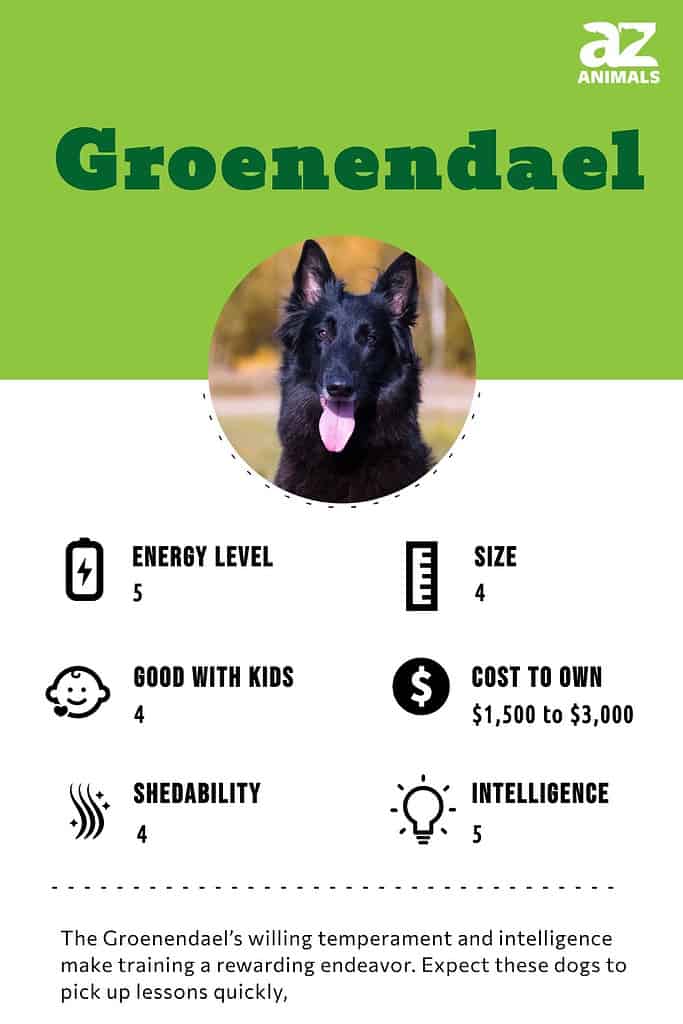
3 Pros and Cons of Owning a Groenendael
| Pros! | Cons! |
|---|---|
| Is smart and easy to train: Groenendaels have willing temperaments and are eager to learn. These intelligent dogs take to training quickly and can be taught to compete in dog sports such as agility trials. | Requires daily, rigorous exercise: This energetic breed needs plenty of exercise beyond walks each day and benefits from training and playtime. If they are not active, these dogs may bark, chew, or dig. |
| Can be an effective watchdog: As this breed is very protective of its family and territory, the Groenendael makes a calm, alert, and reliable watchdog. | Herding instinct may lead to nipping others: The Groenendael’s strong herding tendency can see it run circles around people and nip them. With patience and gentle correction, they can be taught this is not acceptable behavior. |
| Will get along with all family members: These dogs make good companions for families with children, as they are friendly, affectionate, and enjoy spending time with their people. | Can be aggressive toward other animals: It is not unusual for these dogs to be aggressive toward other animals who are not part of their families if not fully socialized early on. |

Groenendaels are family-friendly dogs.
©xkunclova/Shutterstock.com
Types of Groenendaels
In most of the world, the Groenendael is grouped together with the Belgian Tervuren, Belgian Malinois, and Belgian Laekenois into one breed, known as the Belgian Shepherd Dog.
In the U.S., these dogs are split into four distinctive breeds:
- Groenendael, which is long-haired and black
- Tervueren, long-haired and fawn, red or grey
- Malinois, short-coated and red, fawn or grey
- Laekenois, rough-coated and reddish fawn.
The American Kennel Club recognizes each of these dogs as a separate breed. The Laekenois is the most recent of the breeds to win AKC recognition, which it did in 2020, joining the other Belgian Sheepdogs in the Herding group.
Health and Entertainment for your Groenendael
See all of our expert product reviews.

The Groenendael is part of the Belgian Shepherd Dog breed outside of the U.S.
©icemanphotos/Shutterstock.com
Evolution and Origins
Like the other varieties of Belgian Shepherd dogs, the Groenendael was first introduced in Belgium in the late 1800s. Breeder Nicolas Rose is mostly credited for the development of the Groenendael, which is named after his property Chateau Groenendael.
The dogs’ versatility won them fans and by the early 1900s, they were being used as police dogs in Paris and New York and assisting customs officers in their homeland. They served as war dogs during World War I and II, carrying communications and pulling medical and machine gun carts.
A boost in popularity followed World War II and in modern times apart from being family pets they are used for police, defense, search and rescue, therapy, and service work, as well as regularly competing in dog sports such as agility trials.

The Groenendael originated in Belgium in the late 1800s.
©Serova_Ekaterina/Shutterstock.com
Size and Weight
The Groenendael’s height classifies it as a medium to large breed. It is neither stocky nor fine-boned, and the ideal dog is slightly longer than he is tall. Males can reach up to 26 inches while females may mature to 24 inches.
| Height (Male) | 26″ tall |
| Height (Female) | 24″ tall |
| Weight (Male) | 75 lbs |
| Weight (Female) | 70 lbs |
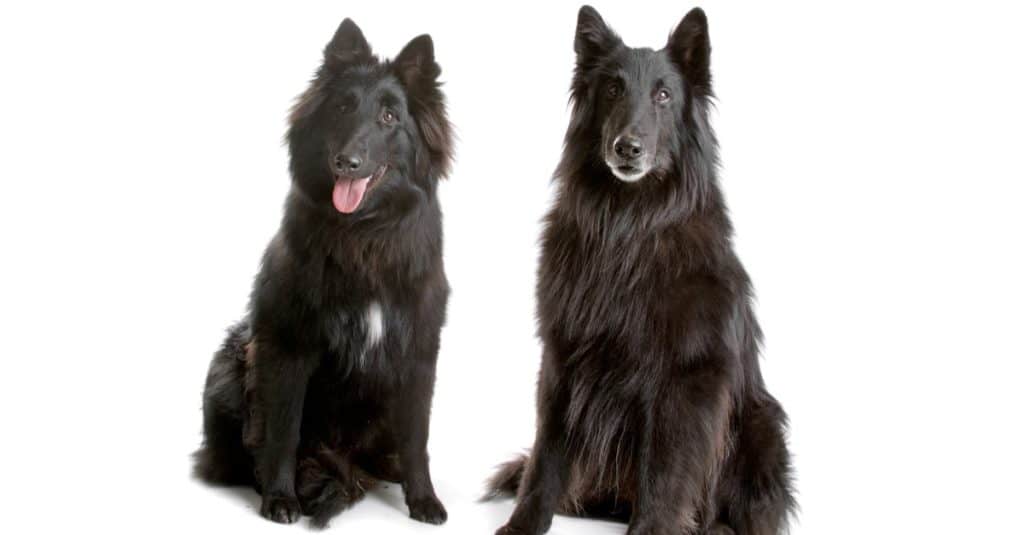
Groenendaels are medium to large dogs.
©Erik Lam/Shutterstock.com
Common Health Issues
The Groenendael is a generally healthy breed. Like other dogs its size, some may develop hip or elbow dysplasia. These conditions aren’t as widespread as in many breeds, such as the German Shepherd.
Some individuals of the breed may also develop skin allergies, epilepsy, or progressive retinal atrophy. With an average lifespan of 12 to 14 years, regular veterinarian care is important to diagnose age-related concerns early.
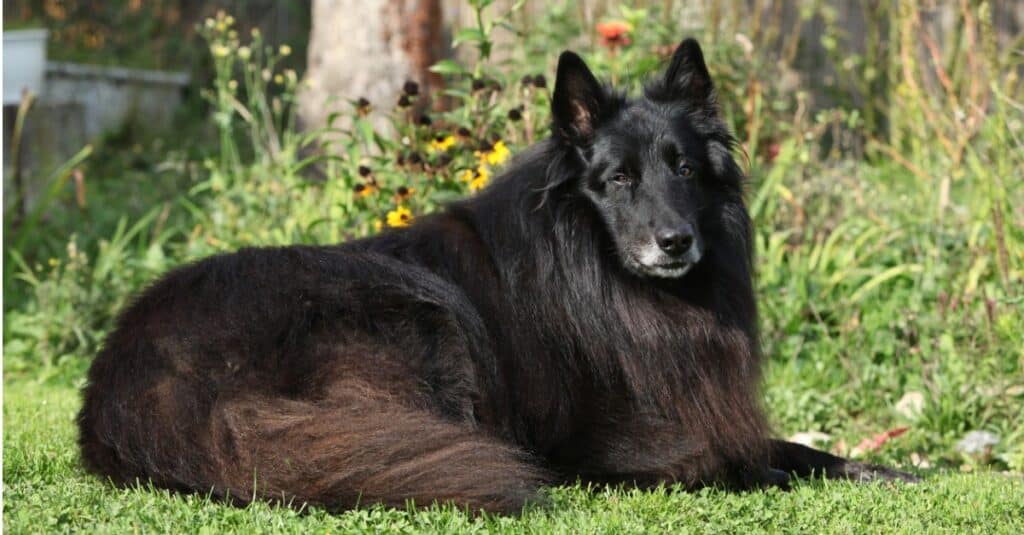
The Groenendael may develop hip or elbow dysplasia.
©iStock.com/Zuzule
Temperament
The Groenendael is an observant, obedient dog. When socialized from a young age, they make great companions. However, dogs that aren’t exposed to strange people and places may become overly shy or aggressive.
The breed is generally easy to train and responds best to a handler who is consistent and positive. Harsh, negative corrections can make the dog apprehensive and timid.
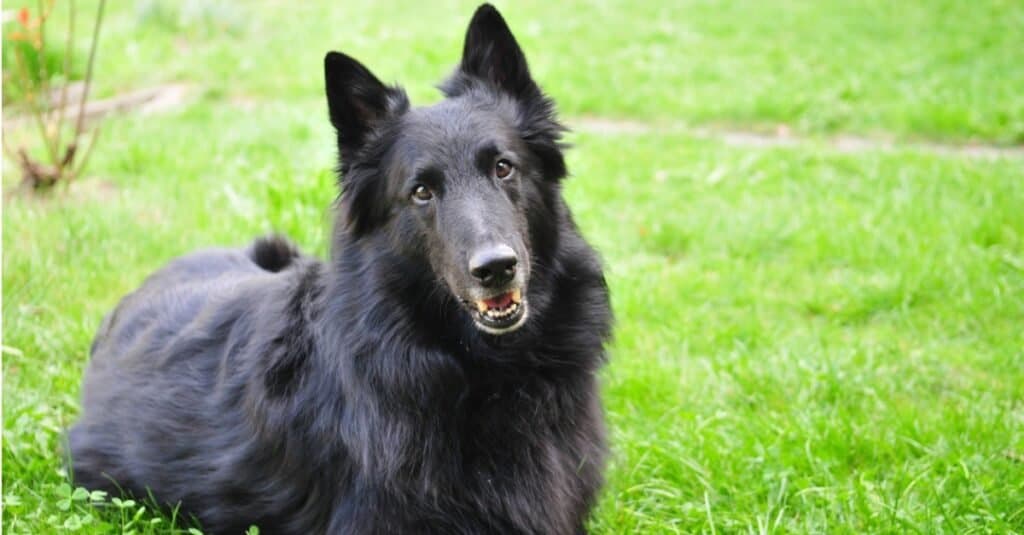
The Groenendael is a great companion when socialized from an early age.
©iStock.com/RKSS
How to Take Care of the Groenendael
The Groenendael belongs in the house with his family. This is not a breed that does well left alone in a yard or kennel. They are highly trainable and can learn excellent manners, making them easy to get along with for all family members, including children and other pets.
The Best Dog Food for Groenendaels
It is important to feed your Groenendael high-quality dog food. Eating at least twice a day ensures he takes his time eating and is beneficial for digestion. The breed does have a tendency towards obesity, so it is important to keep a close eye on his weight. If your Groenendael deals with allergies, a limited-ingredient or allergy-friendly diet could help.
A-Z Animals believes the best dog food for Groenendaels is Purina ONE SmartBlend True Instinct Natural High Protein Adult Dry Dog Food.
This is a clean, high-protein food with no fillers. Just real beef as the first ingredient, for 32% protein and a happy, energetic dog. There’s natural glucosamine for stable, mobile joints, with vitamins A and K, which support eye health and clear vision.
You can buy Purina ONE SmartBlend True Instinct Natural High Protein dog food on Chewy and Amazon.
- High protein beef and salmon recipe for strong muscles and heart health
- Supports muscles, joints, and active lifestyle
- Omega 6 fatty acids for shiny coat and healthy skin
Maintenance and Grooming
With his soft undercoat and coarse outer coat, the Groenendael needs frequent brushing to look his best and minimize the hair he leaves around the house. Spending a few minutes each day brushing is better than a marathon session over the weekend.
Regardless of how well you keep up on his grooming, expect a major shed twice a year. Anyone who has an issue with dog hair on their clothes and furniture may want to select a different breed.
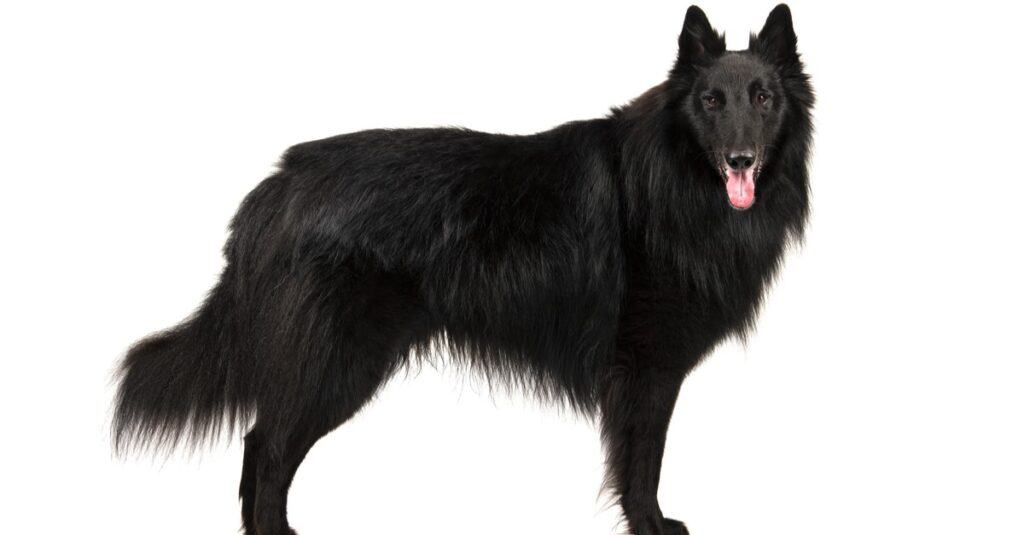
Groenendaels need regular brushing to minimize shedding.
©MirasWonderland/Shutterstock.com
Training
The Groenendael’s willing temperament and intelligence make training a rewarding endeavor. Expect these dogs to pick up lessons quickly, whether it is obedience, agility, or simply good manners. Patient and consistent behavior from the handler yields the best results.
One area not to ignore when raising a Groenendael is socialization. Proper socialization is the most important step you can take to ensure you raise a confident, willing dog. Groenendaels that are kept at home without the opportunity to meet strangers and other animals can become very timid. This timidity can show itself as either shyness or aggression.
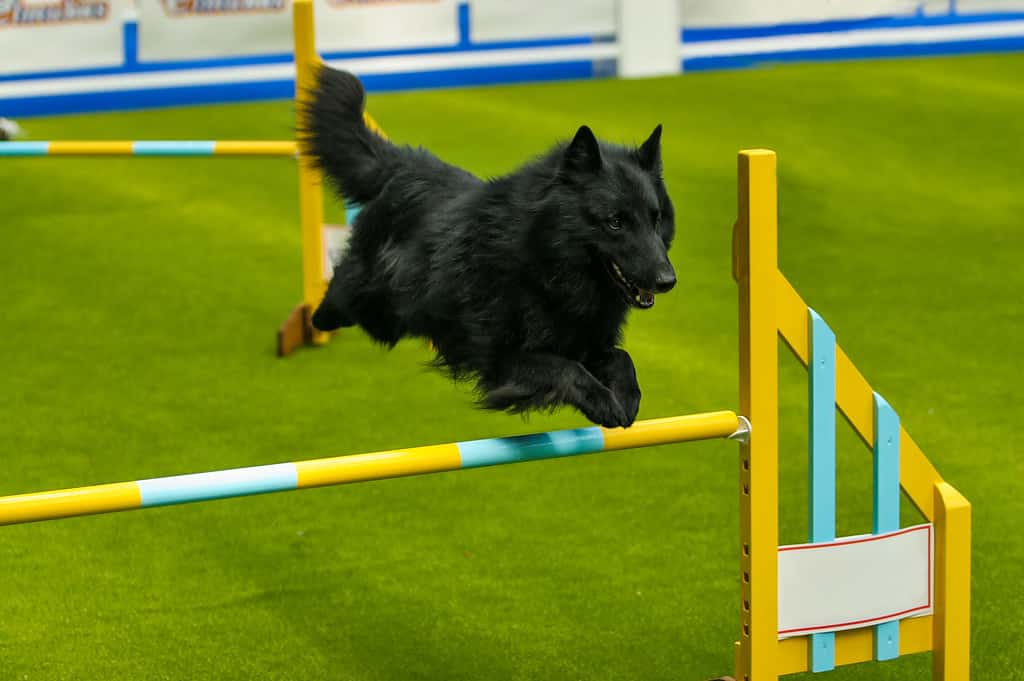
Groenendaels are quick learners and can be trained to compete in agility trials.
©Andraž Cerar/Shutterstock.com
Exercise
This breed is active and needs plenty of exercise. If you aren’t prepared for daily walks as well as time to romp and play, this isn’t the dog for you. A fenced yard does not provide the stimulation this breed needs, they are people-oriented and need training and playtime, as well as exercise, every day. Without enough activity, the breed tends toward destructive behavior, such as chewing, barking, and digging.
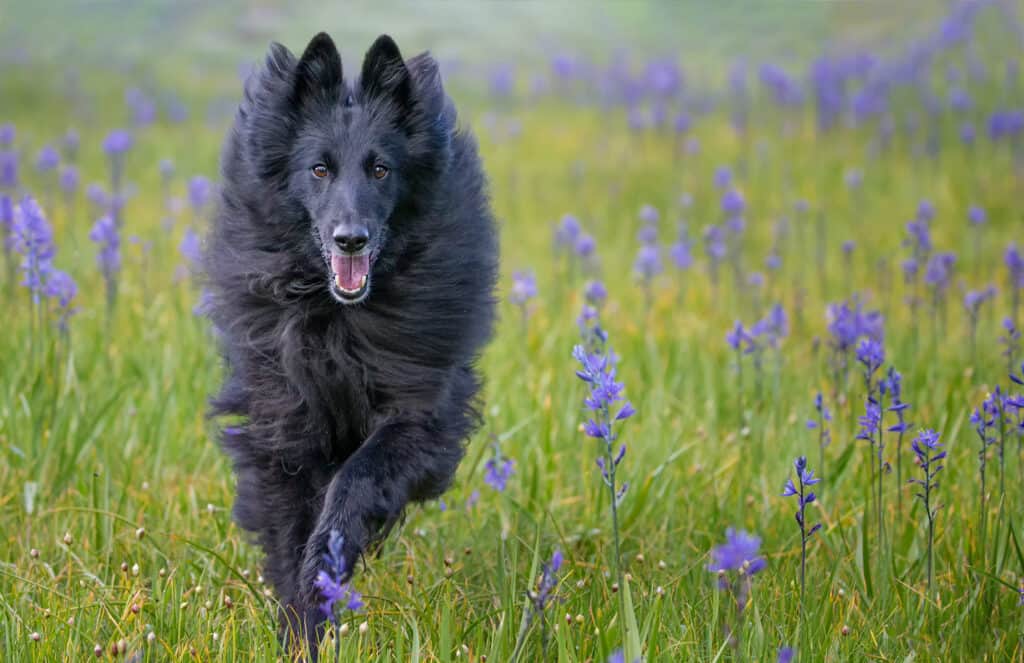
Groenendaels need plenty of exercise on a daily basis.
©Janet Delight/Shutterstock.com
Puppies
The average litter of Groenendaels has between 6 and 10 puppies. Initially, a Groenendael puppy should be fed four times a day. When the puppy reaches 3 months, feedings can be reduced to three times a day.
The most important duty of a new Groenendael owner is proper socialization. Talk with your veterinarian to learn when you can take the pup in public. Regular socialization from a young age is important if you want a happy, confident adult dog.
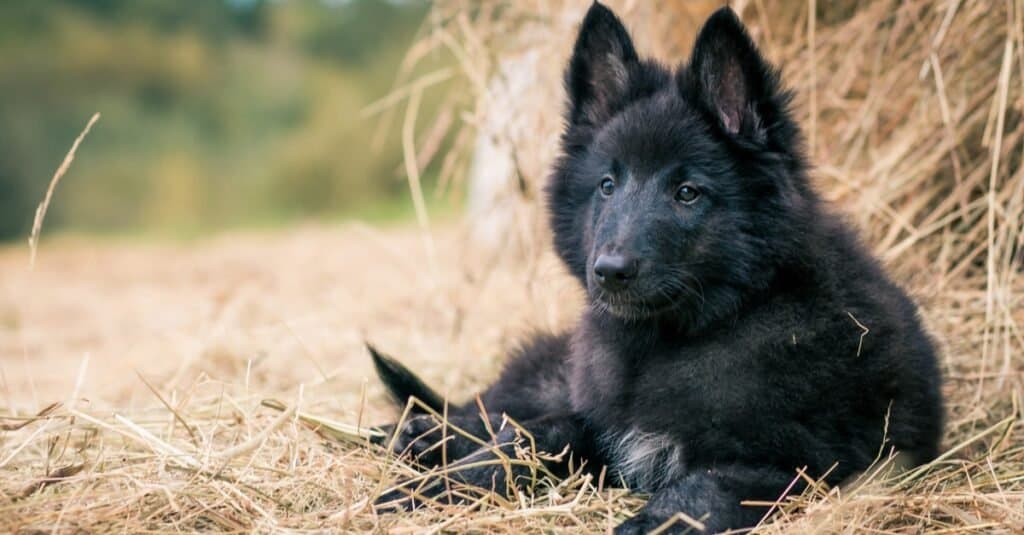
Initially, a Groenendael puppy should be fed four times per day.
©Eve Photography/Shutterstock.com
Groenendaels and Children
The Groenendael, of all the Belgian Shepherds, makes a fine companion for a family with children. Some training may be necessary. The breed’s strong herding tendency can result in him running circles around the child and even gently nipping in an effort to herd them. With patience and gentle correction, they will learn this is unacceptable behavior.
The breed’s high energy level and obedient nature make it a fun choice for endless games of fetch and as a companion on hikes and other adventures.
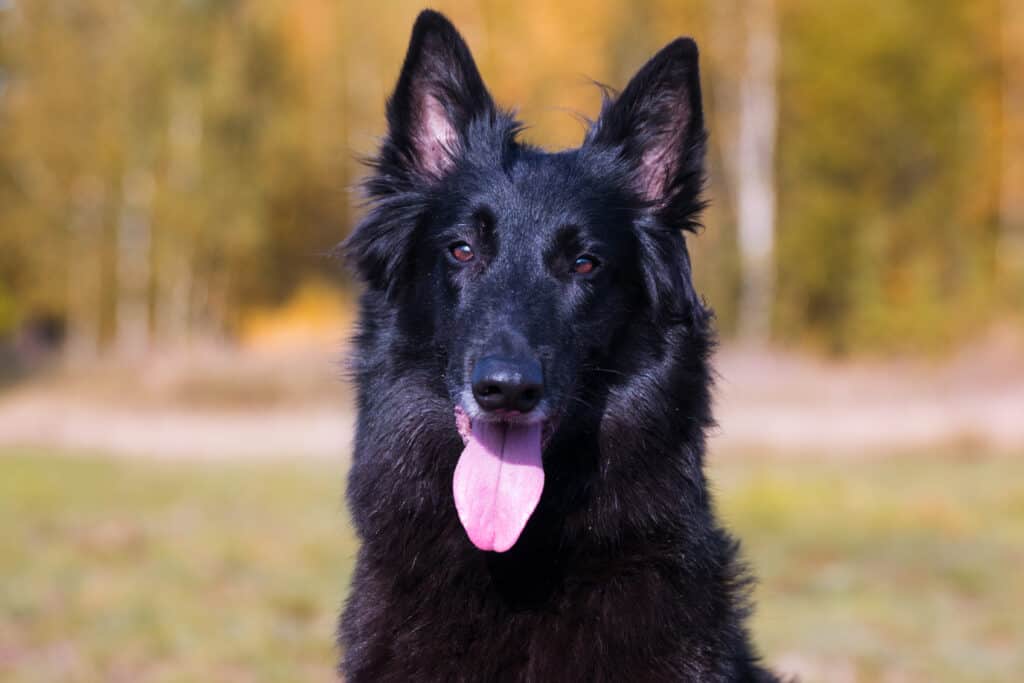
Groenendaels are good with children, but they do possess herding instincts.
©Lisjatina/Shutterstock.com
Dogs Similar to the Groenendael
If you are interested in this breed and want to compare it with some similar breeds, look at any of the other Belgian Shepherds. They all have similarities as well as some things that make them unique.
- Belgian Malinois (pronounced “ma-luhn-WAA”) – Its short, smooth coat requires less grooming than the Groenendael. Colors can range from lighter fawn to deep mahogany and it has a black mask. These dogs are generally more aggressive than Groenendaels.
- Belgian Laekenois (pronounced “lak-in-WAA”) – This is a rough-coated dog and a newly recognized breed by the AKC.
- Belgian Tervuren (pronounced “tr-VYUR-uhn”) – It has a long coat similar to the Groenendael aside from color. The Tervuren is fawn to mahogany in color, with each hair tipped in black. This breed also has a black mask.
In addition, the German Shepherd, while not related to the Belgian Shepherd, shares many characteristics, including intelligence, eagerness to please, and a high activity level.
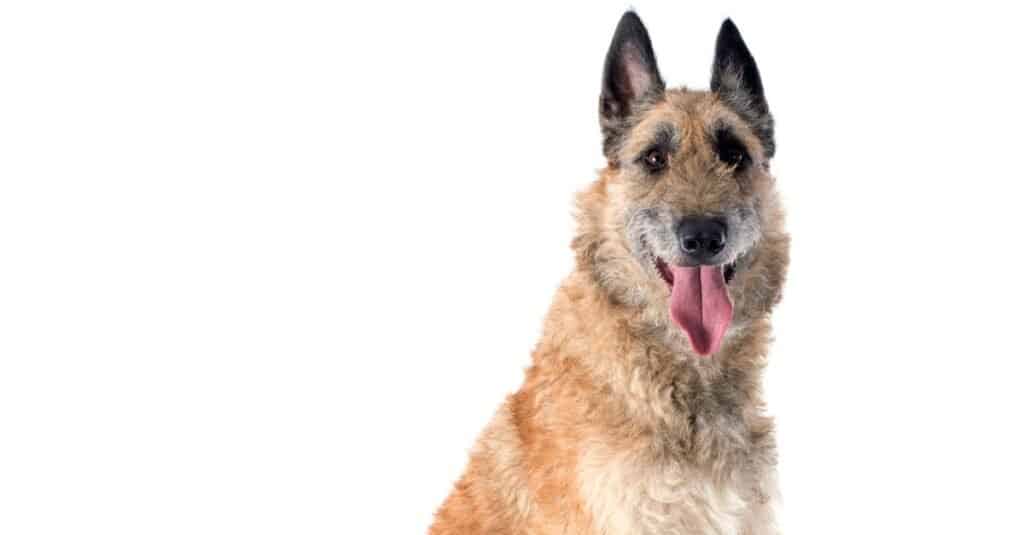
The Belgian Laekenois is the rarest of the four recognized Belgian Shepherds.
©cynoclub/Shutterstock.com
Groenendael Versus Malinois
The Malinois and Groenendael are both Belgian Shepherds, and roughly the same size and weight. They are both herding breeds as well. They do have several key differences. The Malinois is the more aggressive of the two. They are not a good choice for the less experienced dog owner.
Both the Groenendael and Malinois have a high prey drive, but the Groenendael is generally easier to train to leave household pets alone. Finally, the Groenendael is the more affectionate choice. While the Malinois will bond with his family and is eager to please, the Groenendael is more inclined to enjoy cuddles and love.

The German Malinois is similar to the Groenendael but is better suited to more experienced dog owners.
©Bianca Grueneberg/Shutterstock.com
Popular Names for Groenendaels
Popular choices for males include:
- Buddy
- Cooper
- Bear
- Sam
Top choices for females include:
- Molly
- Daisy
- Luna
- Sadie.
Groenendael FAQs (Frequently Asked Questions)
How much do Groenendaels cost to own?
The initial price of a purebred puppy is between $1,500 and $3,000. Although a generally healthy breed, the puppy will still need several rounds of shots, and investing in professional training is money well spent.
Are Groenendaels good with kids?
They can be very good with kids, but it is important to work with both the dog and child. The herding tendency of the breed can lead to circling and nipping, which may be cute in a younger dog but is not much fun with an adult dog or with a small child.
How long does the Groenendael live?
The average lifespan of the Groenendael is between 12 and 14 years.
How do you say Groenendael?
It is pronounced “GROAN-en-dahl.”
How much does a Groenendael cost?
The average price of a purebred puppy is $1,500 to $3,000. You may find a young dog or adult at a more affordable price by working with a rescue.
Are Groenendaels good guard dogs?
The breed’s size and attentiveness make it a good guard dog. Socialization is important to prevent shyness and timidity. A well-socialized dog is confident and not overly aggressive.
Do Groenendaels shed?
Yes, they are heavy shedders. They require regular grooming to look their best and experience major shedding twice a year.
What are the key differences between the Belgian Tervuren and the Groenendael?
The key differences between the Belgian Tervuren and the Groenendael are size, appearance, ancestry, and breeding. Other differences include behavior, health, and lifespan.
Thank you for reading! Have some feedback for us? Contact the AZ Animals editorial team.
Sources
- American Kennel Club, Available here: https://www.akc.org/dog-breeds/belgian-sheepdog/
- Dog Breeds List, Available here: https://www.dogbreedslist.info/all-dog-breeds/groenendael.html
- Belgian Sheepdog Club of America, Available here: https://bsca.info/


















